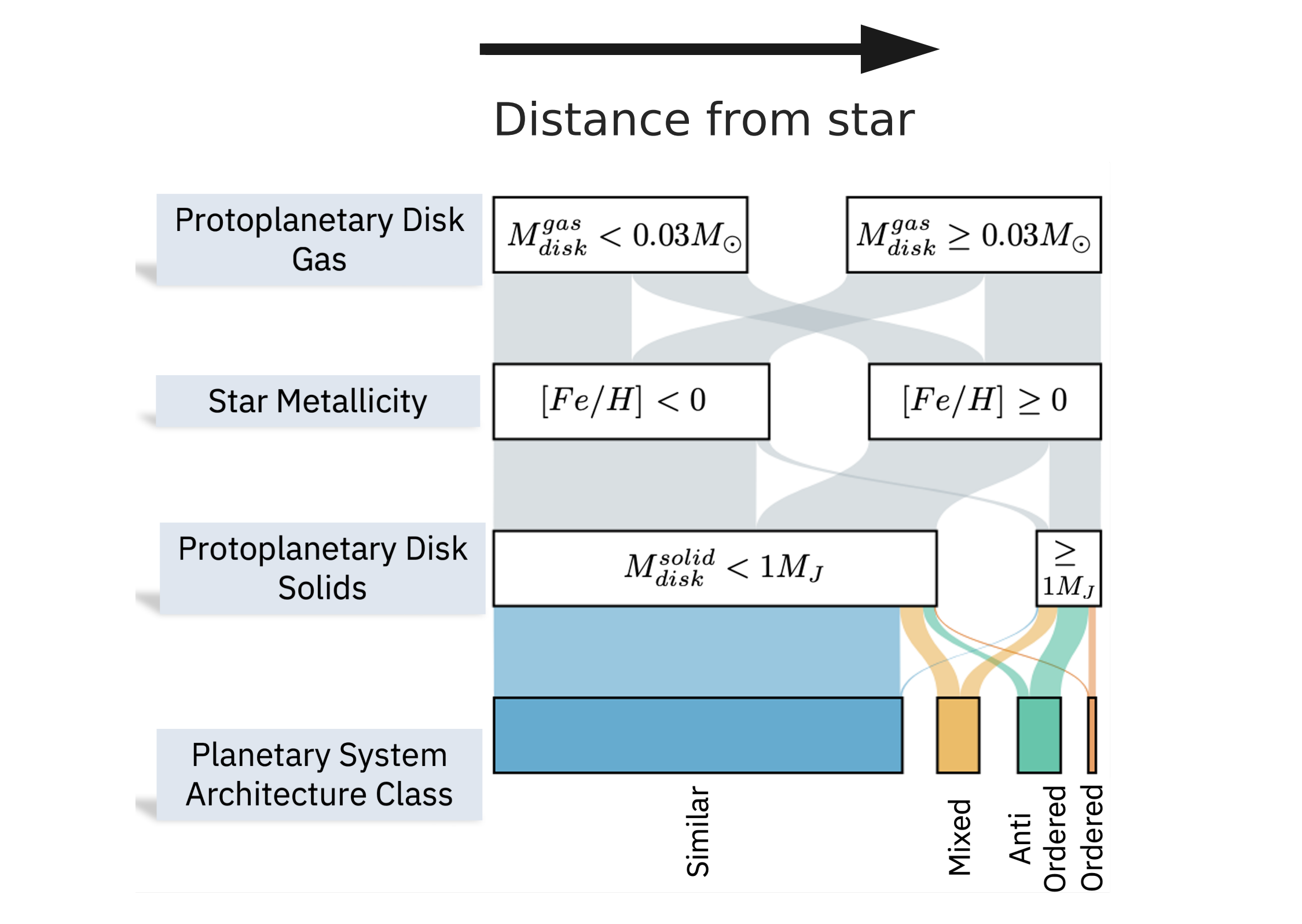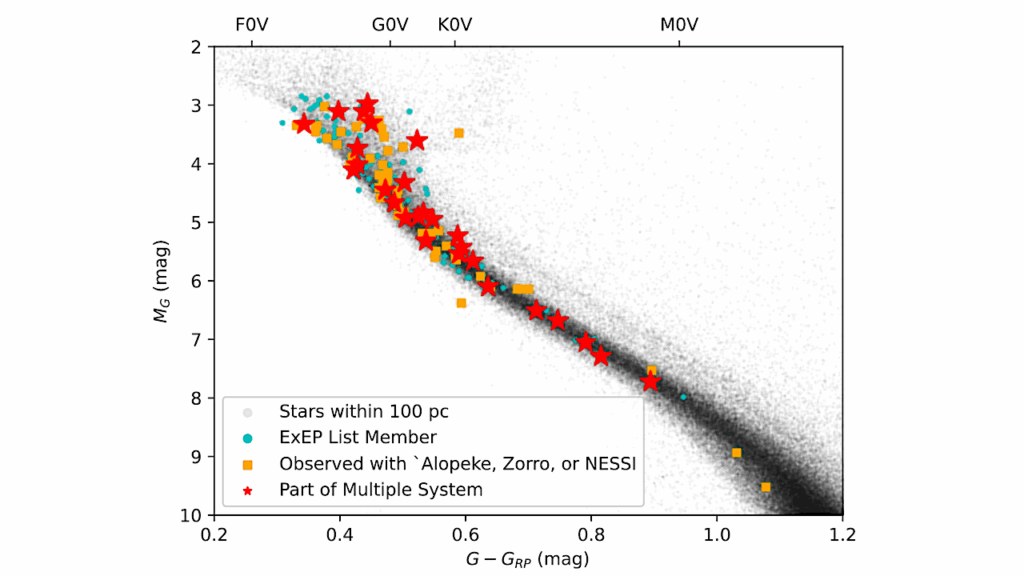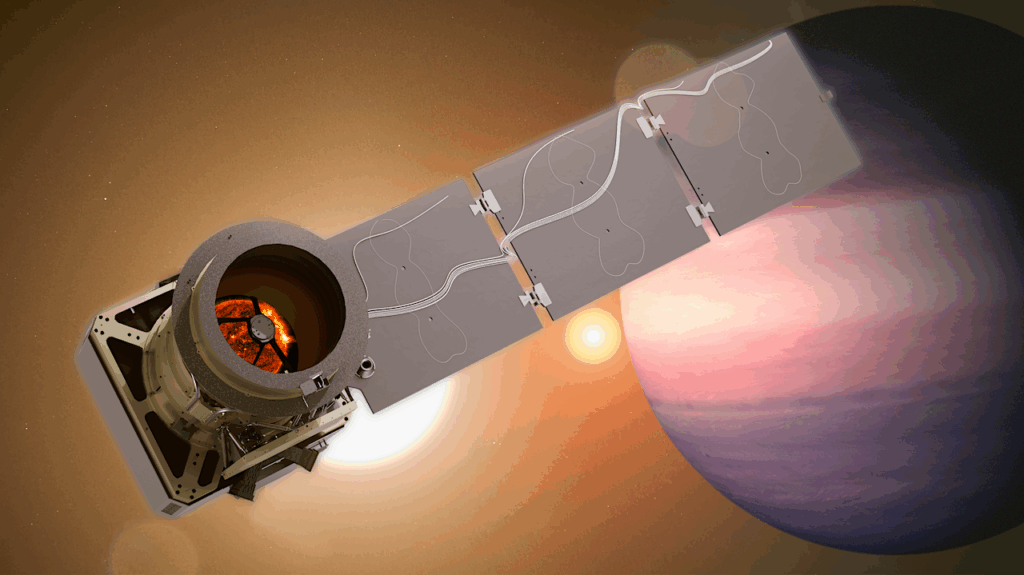A Framework For The Architecture Of Exoplanetary Systems. II. Nature Versus Nurture: Emergent Formation Pathways Of Architecture Classes

In the first paper of this series, we proposed a model-independent framework for characterising the architecture of planetary systems at the system level.
There are four classes of planetary system architecture: similar, mixed, anti-ordered, and ordered. In this paper, we investigate the formation pathways leading to these four architecture classes.
To understand the role of nature versus nurture in sculpting the final (mass) architecture of a system, we apply our architecture framework to synthetic planetary systems — formed via core-accretion — using the Bern model. General patterns emerge in the formation pathways of the four architecture classes.
Almost all planetary systems emerging from protoplanetary disks whose initial solid mass was less than one Jupiter mass are similar. Systems emerging from heavier disks may become mixed, anti-ordered, or ordered. Increasing dynamical interactions (planet-planet, planet-disk) tends to shift a system’s architecture from mixed to anti-ordered to ordered.
Our model predicts the existence of a new metallicity-architecture correlation. Similar systems have very high occurrence around low-metallicity stars. The occurrence of the anti-ordered and ordered classes increases with increasing metallicity. The occurrence of mixed architecture first increases and then decreases with increasing metallicity.
In our synthetic planetary systems, the role of nature is disentangled from the role of nurture. Nature (or initial conditions) pre-determines whether the architecture of a system becomes similar; otherwise nurture influences whether a system becomes mixed, anti-ordered, or ordered.
We propose the `Aryabhata formation scenario’ to explain some planetary systems which host only water-rich worlds. We finish this paper with a discussion of future observational and theoretical works that may support or refute the results of this paper.
Lokesh Mishra, Yann Alibert, Stéphane Udry, Christoph Mordasini
Comments: 12 pages, 5 figures, accepted in A&A
Subjects: Earth and Planetary Astrophysics (astro-ph.EP)
Cite as: arXiv:2301.02373 [astro-ph.EP] (or arXiv:2301.02373v1 [astro-ph.EP] for this version)
Submission history
From: Lokesh Mishra
[v1] Fri, 6 Jan 2023 04:41:36 UTC (1,897 KB)
https://arxiv.org/abs/2301.02373
Astrobiology








